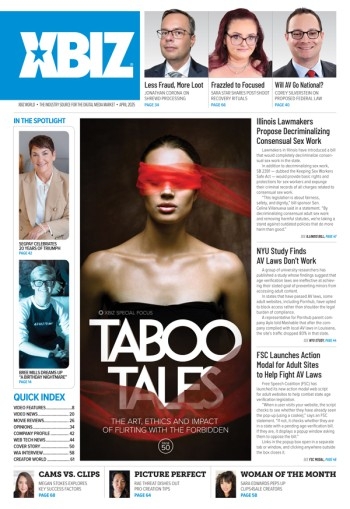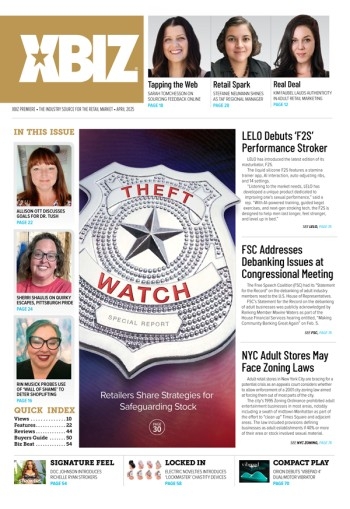Setting resolutions is how many of us start our New Year. Typically, it’s a change to our diets, habits or finances, but this year, let’s make it business-related, to shed excess chargebacks.
Did you know that the first quarter is one of the highest for chargeback or payment disputes? This typically stems from consumers feeling buyer’s remorse after the holidays when their credit card statements come in.
According to Chargeback Help CEO Raja Roy-Choudhury, the top reason for digital content merchants to get a chargeback is fraud. Fraud could be affiliates using a stolen credit card list or a user buying a subscription then selling his login on the secondary market. In the adult industry we often find that there is not a typical fraud problem, but that consumers have buyer’s remorse. Because of this, typical fraud tools like digital fingerprinting do not help adult merchants reduce chargebacks. Disputes can throw off your chargeback rate and potentially put you in breach of card brand thresholds leading to fines and penalties.
When I first started in the space 20 years ago, we could run a 5% chargeback rate. This may sound crazy since that rate has been trimmed way down. Today, Visa holds us to a .90% and Mastercard to a 1.50% chargeback to transaction ratio. Both card brands have the stipulation that you cannot exceed their program threshold if you keep your count below 100 chargebacks per month, but that does not necessarily mean you can run higher ratios.
As a payment facilitator, we are required to maintain our entire portfolio to these standards. It is a delicate balancing act: if your chargeback rate gets too high, you could be subject to action by the payment facilitator or the acquiring bank, leading to restrictions in programs, pricing, terms or even the shutdown of your online sales channel.
Over the past five years, our Q1 portfolio chargeback rate has been about 10% higher than the other quarters. We are fortunate we can easily absorb that annual increase, but for many merchants, this is a challenge. As a payment facilitator, we walk a fine line of always doing our best to keep our clients and portfolio in line with Visa and Mastercard requirements.
We still need to make sure we aren’t being super aggressive by blocking too many transactions, which can kill approval and conversion rates. The fact is, those conversion rates are the top metrics that merchants hold us accountable for. If we are not performing, merchants will pull us out of their cascade and point their traffic to a competitor. As we begin the new year, we wanted to offer some assistance on the chargeback challenge. We partnered with our risk team to break down the top three fraud prevention tools and what steps to take if you exceed the card brand threshold.
Tool Time
One of the easiest ways to prevent chargebacks is to stop them upfront. Building a strong fraud toolbox is a great way to go. For instance, we utilize our own internal software algorithms as well as third party tools to help us prevent fraudulent transactions from getting into our system in the first place. All PSPs, gateways and payment facilitators will have their own set of fraud tools that merchants can leverage.
Many of us also work off of negative databases, which include historical data of bad emails, IP addresses, card data and other identifying information. As a merchant, you can start your own negative database as well to make sure bad players don’t travel across to your other payment providers. Don’t forget verification tools like customer address verification (AVS) and Card Verification (CVS).
3-D Secure 2.0 (3DS) is another important tool. This payment verification service provides extra security (and potential liability shift for some chargebacks) by using a simple authentication procedure. Shoppers are seamlessly redirected to a page hosted by their own bank, where they will be authenticated through a frictionless process, by entering a password or by entering an SMS code sent to them by their bank.
Stop the January to March Jump
Chargebacks typically trail transactions anywhere from 30 to 90 days, normally with a maximum of 120 days after the charge. It’s typical to see your first quarter 10% higher than the rest of the year. You many find yourself asking, can anything be done now that it’s January? While it can be a tough job to stop a chargeback in the current month to help maintain a threshold, there are a few things you can do.
First, up your game on customer service. Offering 24x7 availability through multiple channels including phone, chat, email and self-service is key. If the customer can’t easily get in touch with you to resolve a billing dispute, their bank will likely be the next call they make. Most of the time, this means a chargeback. Make sure links are available for consumers to reach you or your payment service provider to help resolve issues.
Next, keep track of and check consumer log-ins. If the consumer has not logged in to view your members area, there is a good chance the consumer is not aware of the purchase and it is legitimate fraud. Proactively refund to prevent a chargeback or cancel the membership to help minimize the risk of multiple chargebacks. Reach out to the consumer for a special offer to help increase transactions count or run special offers during the first quarter to help pump up your volume. Cancel/Keep offers are a great way to retain the customer you already acquired. And take advantage of the fraud files provided by your acquirer or payment service provider. Again, be proactive and refund or cancel transactions based on these files, which is something we aim to do for clients.
Threshold Trouble
What happens if you exceed the threshold? First, don’t panic. Visa and Mastercard both typically allow a six-month workout period. The one caveat is how your acquiring bank handles their overall portfolio. Most acquirers that we partner with allow for merchants to work their way through a chargeback threshold breach. Card brands offer workout periods, with requirements and escalating penalties for each month in violation.
For Visa, once you breach the threshold, the chargeback penalty becomes $100 a chargeback. Mastercard has an escalating set fine based on the violation month, and the severity of the violation. In addition to non-compliance fees per chargeback, Visa and Mastercard impose a $25,000 review fee if you’re out of compliance beyond seven months.
Both brands require a write-up on why your account breached the threshold. You’ll need to include what tools you have in place to prevent fraud and future breaches, along with what you have put in place to resolve the current situation. Visa and Mastercard then review this plan and determine if they will impose fines or suspend them. If you’re barely over the limit and not a habitual offender, the card brands are reasonable and will sometimes suspend the fines, giving you a few months’ grace to work your way out. Keep working at it.
Typically, it takes a good 90 days to bring your account back under threshold, so realize there is no overnight fix. Card brands want to see progress and require a monthly update each month you exceed the ratio. To exit the program, you must be in compliance for three months in a row. Card brands and acquirers know that problems occur, and good merchants will do their best to work their way out of the breach.
Issuing banks continue to make filing a chargeback easier for card holders. Adult merchants not using any chargeback prevention tools could see an increase in chargebacks of up to 10% according to Chargeback Help. It’s best to be proactive and decrease the threat that could impact your bottom line.
Cathy Beardsley is president and CEO of Segpay, a global leader in merchant services offering a wide range of custom financial solutions including payment facilitator, direct merchant accounts and secure gateway services. Under her direction, Segpay has become one of four companies approved by Visa to operate as a high-risk internet payment services provider. Segpay offers secure turnkey solutions to accept online payments, with a guarantee that funds are always safe and protected with its proprietary Fraud Mitigation System and customer service and support. For any questions or help, contact sales@segpay.com or compliance@segpay.com.







